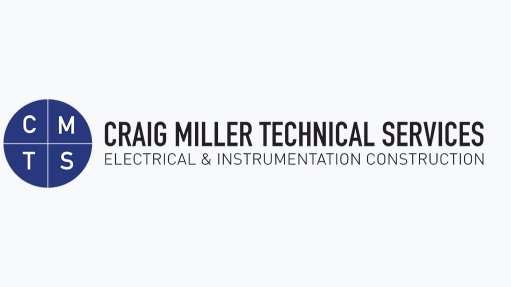On-The-Air (18/06/2021)
Every Friday, SAfm’s radio anchor Sakina Kamwendo speaks to Martin Creamer, publishing editor of Engineering News & Mining Weekly. Reported here is this Friday’s At the Coalface transcript:
Kamwendo: Sasol’s revelation at this week’s ‘SA Tomorrow’ conference has boosted the outlook for hydrogen.
Creamer: Yes, we are looking towards a hydrogen economy. It can create a lot of jobs and can do a lot for South Africa. It can move us into decarbonisation. This is incredible that the discussion that took place at the ‘SA Tomorrow’ conference, sponsored by the JSE and banks, showed that we can get green hydrogen very quickly.
In fact, Sasol, which is a huge producer of grey hydrogen and has been doing that since 1950 when it began, can switch over to producing green hydrogen using solar energy. Sasol said that it could do so in 24 months and it could repurpose the Sasolburg facilities to produce this green hydrogen. I think that could put us ahead of many in the world, because they have also struck a deal on the automotive front with Toyota. Sasol is collaborating with Toyota, which is a very big company also involved in bigger vehicles like busses and big vehicles, which is where they want to start.
They will then set up infrastructure and have green hydrogen ready. Instead of filling your vehicle up with petrol or diesel, you will fill it up with this green hydrogen and it becomes a fuel cell operated business. At the same time, Sasol wants to work with Anglo American on the hydrogen corridor, which is being planned at the moment. A study is being done on it and many South African and international companies are involved. They want to start with the bigger vehicles, because those always have depots and you know where they are going to, so you can have the infrastructure in place to give them the green hydrogen, which will then be turned into electricity to drive these trucks and busses cleanly.
Kamwendo: South Africa’s manganese was this week given huge recognition by the US.
Creamer: The United States at the moment, the White House, has given instructions to technical people to set up a blueprint on how to revitalise manufacturing, revitalise the economy, particularly post-Covid. They came up with a whole lot of supply chains that they needed and they looked around the world, on where to get critical metals.
They found that with a lot of the critical metals there are supply problems, potential critical lack of supply. So, even with lithium they were discussing mining it themselves rather than simply relying on the world. But when it came to manganese, they acknowledged South Africa as the biggest supplier and described manganese as a great contender in the battery space. They also described it as being different from other metals in that its availability is there. There are no supply issues and the price is good. They see it as a preferred battery element contender, which is a great big boost for manganese. We are the biggest supplier in the world and we also have got huge reserves.
Most manganese goes into steel making, but it is now being considered for these areas of clean energy, the battery storage of solar power and wind power. It will be great if manganese really lifts it head high. Certainly the White House has given it a great status in this document ,which they produced, which was just over 230 pages.
Kamwendo: 300-plus mines have been assessed in a sweeping move to save lives and protect the environment.
Creamer: People are moving to protect the environment and the mining companies and the original equipment manufacturers are working together to produce safer, cleaner vehicles. You have got 29 mining companies and 19 OEMs, as they call them, trying to redevelop the way they produce their products. They want to decarbonise their fleets. Of course, this is going to take a bit of time.
What they have done is they have assessed mining fleets at 300 mines already to see where they stand in terms of carbon emissions into the atmosphere, but also the killing people with vehicles, particularly. There is a high percentage of deaths in these mines that occur through vehicle collision. What they want to do before 2025, is have a technology that totally eliminates vehicle collision. Vehicles will not be able to collide with anything because they will stop in situations like that before the collision occurs.
At the same time, they also want to decarbonise their fleets. We know, of course, that we have a decarbonisation process going on just north of us, in Limpopo province. As things stand now, I think what Anglo American is doing with its hydrogen truck at their Limpopo platinum group metals mine is probably ahead of the world, because the rest of the people are talking about 2025, where they could help underground in reducing the diesel emissions. But, on surface they are talking about 2040. We know that probably by the end of the year, Anglo will already have a situation in South Africa where it will have zero emissions on surface and that will be brought about at the Anglo American platinum mine.
Perhaps there could be a great trailblazing effect here and the whole of the mining world could follow this. I hope before the end of the year Anglo gets this through and that their 300 ton truck proves to be a zero-emission performer.
Kamwendo: Thanks very much. Martin Creamer is publishing editor of Engineering News and Mining Weekly.
Article Enquiry
Email Article
Save Article
Feedback
To advertise email advertising@creamermedia.co.za or click here
Comments
Press Office
Announcements
What's On
Subscribe to improve your user experience...
Option 1 (equivalent of R125 a month):
Receive a weekly copy of Creamer Media's Engineering News & Mining Weekly magazine
(print copy for those in South Africa and e-magazine for those outside of South Africa)
Receive daily email newsletters
Access to full search results
Access archive of magazine back copies
Access to Projects in Progress
Access to ONE Research Report of your choice in PDF format
Option 2 (equivalent of R375 a month):
All benefits from Option 1
PLUS
Access to Creamer Media's Research Channel Africa for ALL Research Reports, in PDF format, on various industrial and mining sectors
including Electricity; Water; Energy Transition; Hydrogen; Roads, Rail and Ports; Coal; Gold; Platinum; Battery Metals; etc.
Already a subscriber?
Forgotten your password?
Receive weekly copy of Creamer Media's Engineering News & Mining Weekly magazine (print copy for those in South Africa and e-magazine for those outside of South Africa)
➕
Recieve daily email newsletters
➕
Access to full search results
➕
Access archive of magazine back copies
➕
Access to Projects in Progress
➕
Access to ONE Research Report of your choice in PDF format
RESEARCH CHANNEL AFRICA
R4500 (equivalent of R375 a month)
SUBSCRIBEAll benefits from Option 1
➕
Access to Creamer Media's Research Channel Africa for ALL Research Reports on various industrial and mining sectors, in PDF format, including on:
Electricity
➕
Water
➕
Energy Transition
➕
Hydrogen
➕
Roads, Rail and Ports
➕
Coal
➕
Gold
➕
Platinum
➕
Battery Metals
➕
etc.
Receive all benefits from Option 1 or Option 2 delivered to numerous people at your company
➕
Multiple User names and Passwords for simultaneous log-ins
➕
Intranet integration access to all in your organisation


















